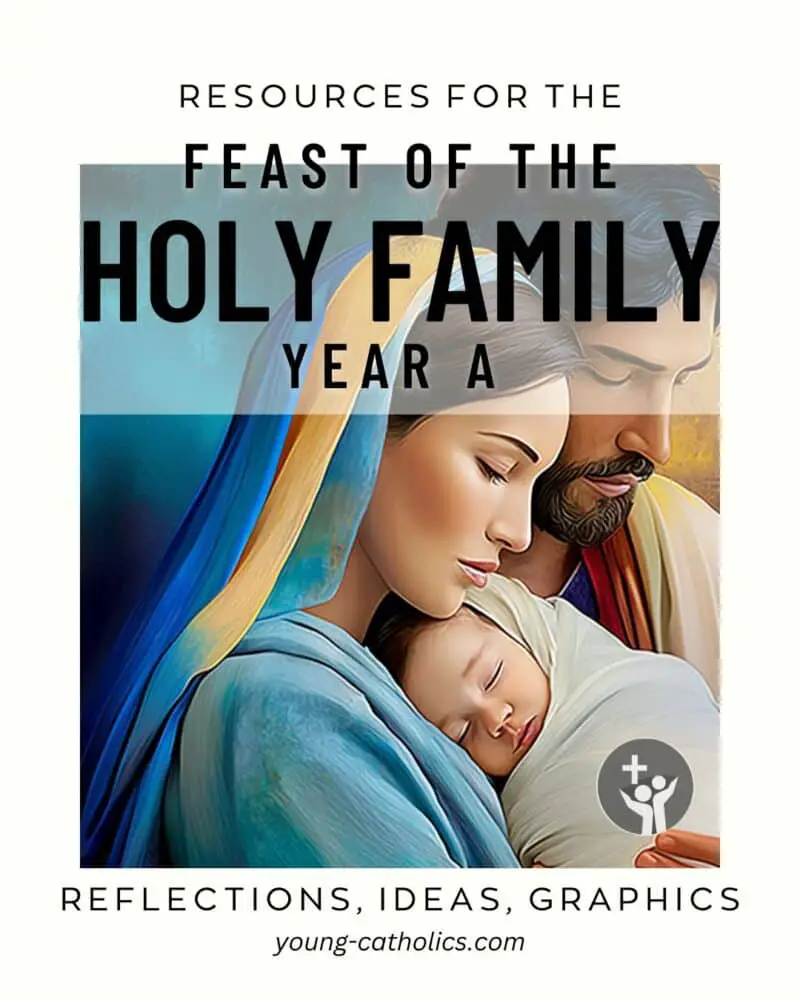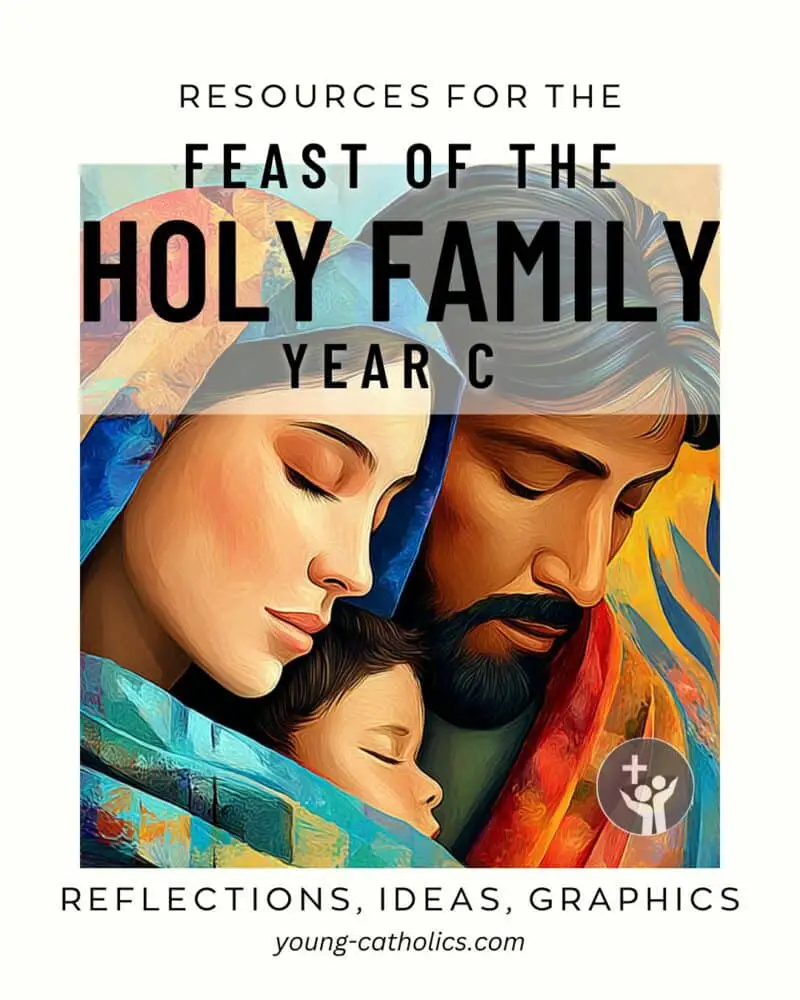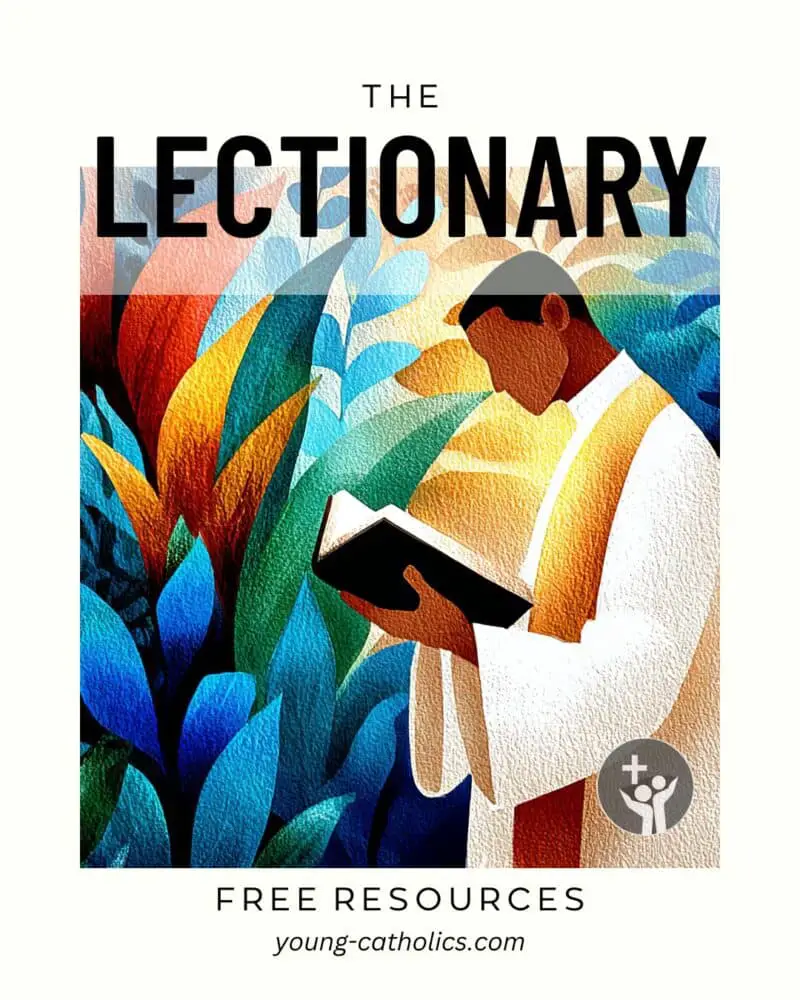Feast of the Holy Family of Jesus, Mary and Joseph

The Feast of the Holy Family reminds us to look at the love, faith, and trust shared by Jesus, Mary, and Joseph. In all three years, the readings show how the Holy Family lived with care and obedience to God. One Gospel tells how they fled to Egypt to protect Jesus. Another shares the story of Jesus being found in the temple, speaking with the teachers. These moments show how they listened to God and stayed close to each other.
Other readings speak about family life, kindness, and respect. Paul writes about being patient, forgiving, and loving in our homes. We are reminded to honor parents and care for each other. The Feast of the Holy Family calls us to follow their example—by praying together, helping one another, and trusting God in daily life.
Click on the appropriate year below to see resources, themes, homilies, and more. See how to determine the correct year.
Feast of the Holy Family Year A
Feast of the Holy Family Year B
Feast of the Holy Family Year C

Mass Readings for the Feast of the Holy Family Year A
See resources, homilies, and more for the Feast of the Holy Family Year A readings here.
The Feast of the Holy Family Year A reminds us that Jesus lived in a real family with love, work, and daily struggles. Mary and Joseph cared for Him and trusted God, even when things were hard.
This day helps us think about our own families and how we can show love through kindness, patience, and listening. God is with us in everyday family life.
- First Reading – Sirach 3:2-6, 12-14: God values honoring one’s parents. Respecting them brings many blessings, including answered prayers, long life, and comfort for mothers. Care for aging parents kindly and patiently.
- Responsorial Psalm – Psalm 128: Respecting and following the Lord leads to personal blessings, a prosperous family, and a long, fulfilling life observing Jerusalem’s success.
- Second Reading – Colossians 3:12-22: Adopt virtues like compassion and kindness, forgive each other, and let Christ’s peace and message guide you. Act in all things with gratitude in the name of Jesus.
- Gospel – Matthew 2:13-15, 19-23: Joseph, following angelic directions in dreams, fled with Mary and Jesus to Egypt to escape Herod’s threat, returned to Israel after Herod’s death, and settled in Nazareth as foretold by prophets.

Mass Readings for the Feast of the Holy Family Year B
See resources, homilies, and more for the Feast of the Holy Family Year B readings here.
The Feast of the Holy Family Year B reminds us that Jesus was brought to the temple by Mary and Joseph. They followed God’s law and trusted His plan. Their family life was simple but full of love and faith.
This feast helps us see that God is with us in family life too—in small tasks, in care, and in quiet acts of love. We are called to be like the Holy Family, choosing faithfulness and kindness each day, even when things are not easy.
- First Reading – Sirach 3:2-6, 12-14: God honors the authority of parents. Respecting one’s father and mother brings blessings, atonement for sins, and longevity. Caring for aging parents is a lasting act of kindness.
- Alternate First Reading – Genesis 15:1-6; 21:1-3: God promises Abram a great reward, assuring him his own descendants will be numerous as stars. Abram’s faith is counted as righteousness, and Sarah bears him a son, Isaac, as promised.
- Responsorial Psalm – Psalm 128: Those who revere the Lord and follow His ways are blessed. They will prosper in their work, have a fruitful family, and witness Jerusalem’s prosperity throughout their lives.
- Alternate Responsorial Psalm – Psalm 105: Thank the Lord and declare His deeds. Rejoice in seeking Him, remembering He is our God, whose just rule extends worldwide. He forever upholds His covenant with Abraham and Isaac.
- Second Reading – Colossians 3:12-21: As God’s chosen, embrace compassion, kindness, humility, and patience. Forgive as the Lord forgave you and let Christ’s peace rule your heart. In all things, act with thankfulness to God.
- Alternate Second Reading – Hebrews 11:8, 11-12, 17-19: Abraham’s faith led him to unknown lands and enabled him to father descendants despite old age and Sarah’s sterility. His faith was tested when he offered Isaac, trusting in God’s promise.
- Gospel – Luke 2:22-40: Joseph and Mary presented Jesus at the temple, fulfilling the law. Simeon, guided by the Holy Spirit, recognized Jesus as the Messiah, prophesying His impact and Mary’s future sorrow. The prophetess Anna also acknowledged Jesus, praising God and speaking of Him to those awaiting Jerusalem’s redemption. Afterward, they returned to Nazareth, where Jesus grew strong and wise, with God’s favor.

Mass Readings for the Feast of the Holy Family Year C
See resources, homilies, and more for the Feast of the Holy Family Year C readings here.
The Feast of the Holy Family Year C reminds us that Jesus lived in a real home with Mary and Joseph. They cared for Him and helped Him grow.
One story we hear is how they found Jesus in the temple, talking with the teachers. This shows that even in a faithful family, there can be confusion and worry. But love, trust, and faith bring them back together. This feast helps us see how God works through daily life and family moments, even when things don’t go as planned.
- First Reading – Sirach 3:2-6, 12-14: Respect and care for parents brings spiritual and personal benefits, including answered prayers and a long life.
- Alternate First Reading – 1 Samuel 1:20-22, 24-28: Hannah gave birth to Samuel after praying for a child. She dedicated him to the LORD at the temple in Shiloh once he was weaned.
- Responsorial Psalm – Psalm 128: Honoring and following the Lord’s ways brings happiness, prosperity in one’s work, a fruitful family, and a blessed life.
- Alternate Responsorial Psalm – Psalm 84: My soul longs for the LORD’s sanctuary, finding joy and strength there. Those who live in God’s house are continually blessed and praise Him.
- Second Reading – Colossians 3:12-21: Embrace virtues like compassion and kindness, forgive each other, and let Christ’s peace rule your hearts. Teach, advise, and sing with gratitude, doing all in Jesus’ name.
- Alternate Second Reading – 1 John 3:1-2, 21-24: We are God’s children, loved deeply by Him. We remain in Him by obeying His command to believe in Jesus and love one another, confirmed by His Spirit within us.
- Gospel – Luke 2:41-52: At twelve, Jesus stayed behind in Jerusalem during Passover to discuss scripture with temple teachers, astounding many with his understanding, before returning home obediently.
Resources

Lookup Other Liturgical Dates in the Lectionary
The Bible is the complete collection of sacred books. The Lectionary is a book used at Mass that includes selected readings from the Bible. These readings follow the Church calendar and help us focus on important parts of our faith. The Lectionary does not include every verse, but it gives us key passages for each Sunday and holy day.
The Feast of the Holy Family has special readings that reflect on family life and the example of Jesus, Mary, and Joseph.
The Lectionary is arranged in cycles. Sundays follow a three-year cycle: Year A, Year B, and Year C. Each year highlights a different Gospel. Weekday readings follow a two-year cycle. The Gospel of John is often used during Lent and Easter. In the United States, the New American Bible is used for all readings at Mass. This ensures that Catholics across the country hear the same Scriptures, including those for the Feast of the Holy Family.
How to Determine the Liturgical Year
The liturgical cycle is a three-year sequence of A, B, and C.
- 2024 is Year B
- 2025 is Year C
- 2026 is Year A
- 2027 is Year B
- 2028 is Year C
- 2029 is Year A
- 2030 is Year B
- 2031 is Year C
- … and so on
Social Media Graphics and Bulletin Artwork
Held in Love and Peace

This tender image of the Holy Family captures the warmth, care, and unity that shine through the Feast of the Holy Family. It shows Mary and Joseph gently holding the child Jesus, surrounded by vibrant leaves that suggest life and hope.
Perfect for bulletins, newsletters, or teaching tools, this image is available for download to help share the message of faithful family love.
Paid subscribers may download a large copy this digital artwork (without watermarks) free of charge by clicking here. You must be logged in as a paid subscriber to access the file.
Only current paid subscribers have the rights to use the artwork.
If you would like this image to be made available as a specific product (card, poster, mug, etc.) or as an extra high resolution image for personal use just post a comment about what you want and we will create a link to our online store for you.
Living with Love and Trust
The Feast of the Holy Family celebrates Jesus, Mary, and Joseph. It reminds us that family life is holy when it is built on love, patience, and trust in God. In one Gospel, the family flees to Egypt to keep Jesus safe. In another, Jesus is found in the temple, teaching and listening.
In all three years, we see how the Holy Family listens to God and cares for one another. They face fear and change, but they stay together. Their example shows us how to live with faith in daily life.
Other readings talk about kindness, respect, and forgiveness. Paul tells families to be patient, gentle, and thankful. Children are told to honor their parents, and parents to love with care.
The Feast of the Holy Family is a time to look at our own families. We are invited to follow their example by loving, listening, and growing in faith together.
Your Turn
The Feast of the Holy Family invites us to think about how we live with others. Are we showing kindness, patience, and respect in our homes?
Take time to read the Scriptures for this feast. Think about what you can do to bring more peace and love to your family. Share your thoughts in the comment section. Others may be helped by what you share.


Leave a Reply